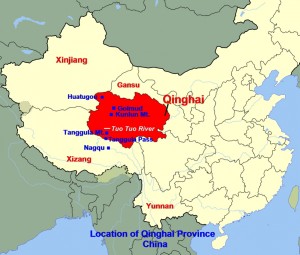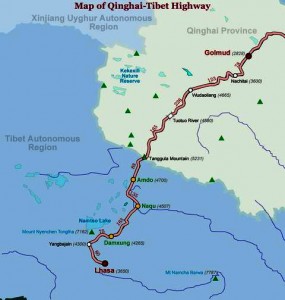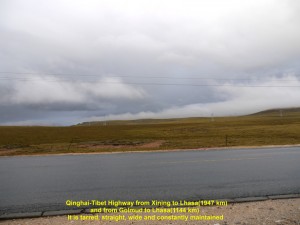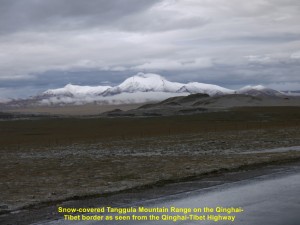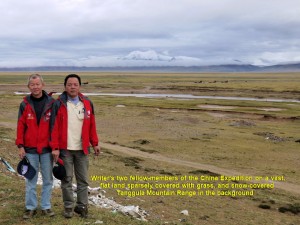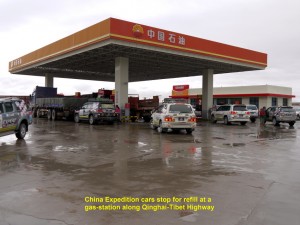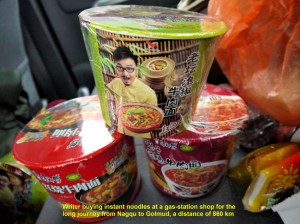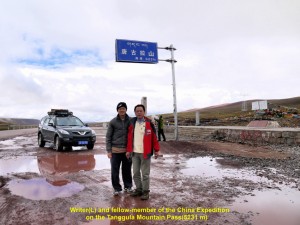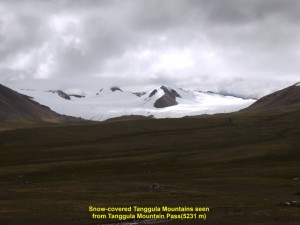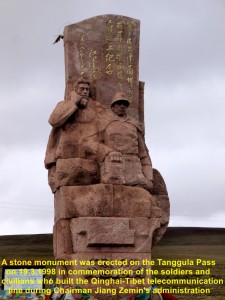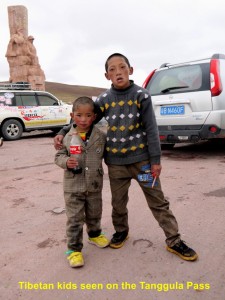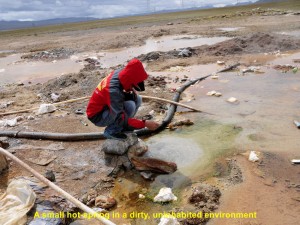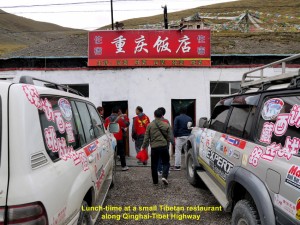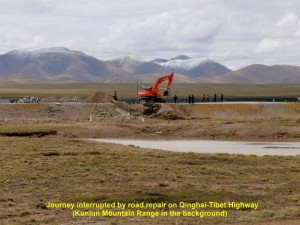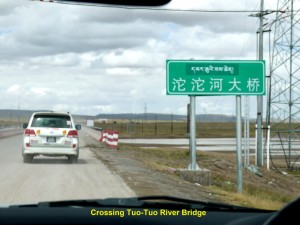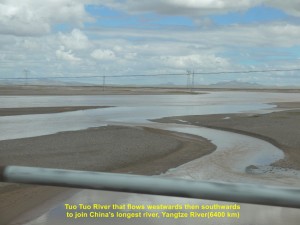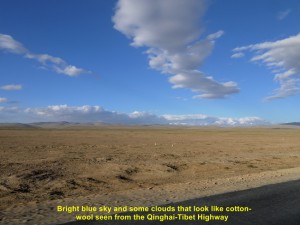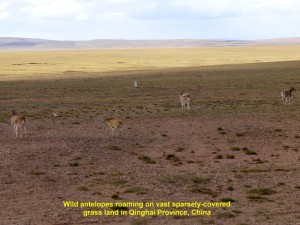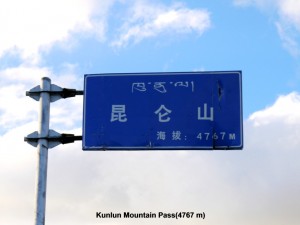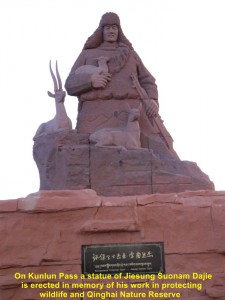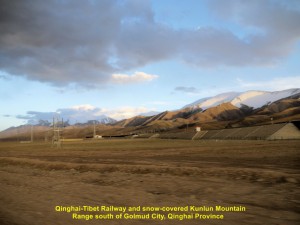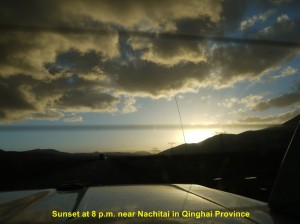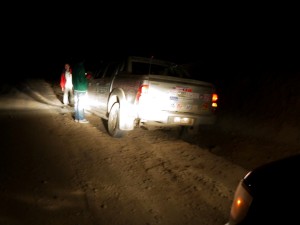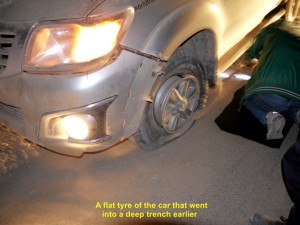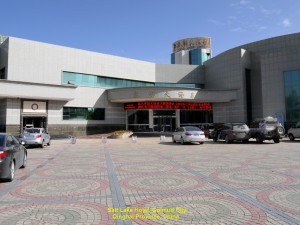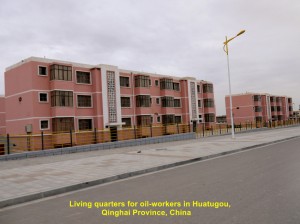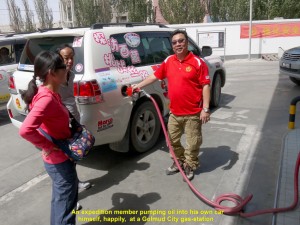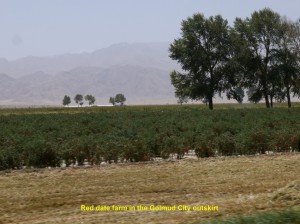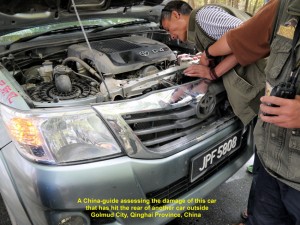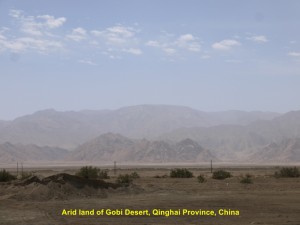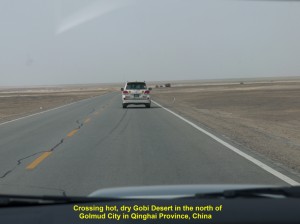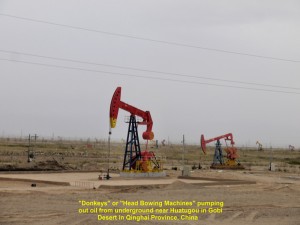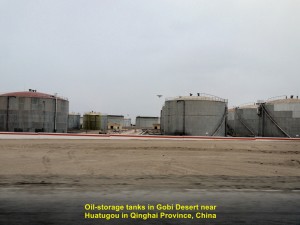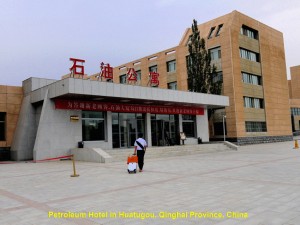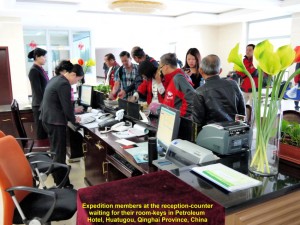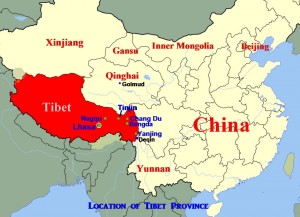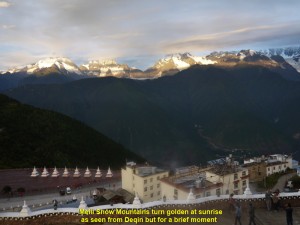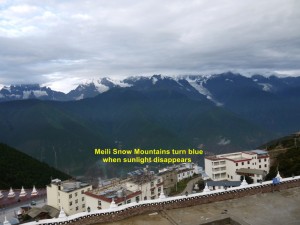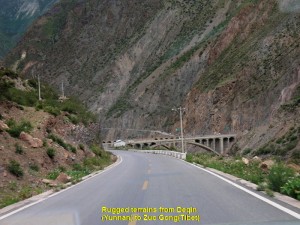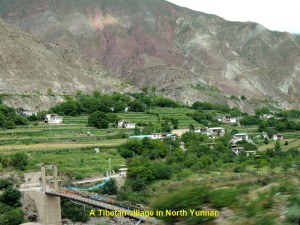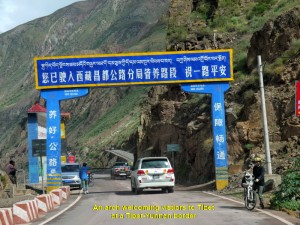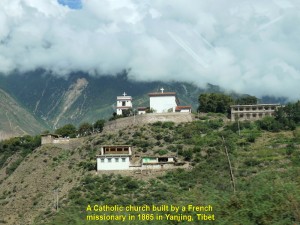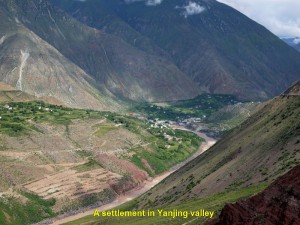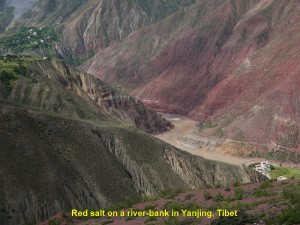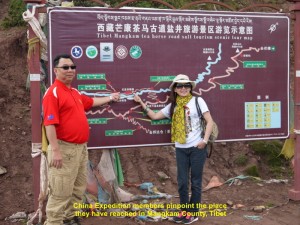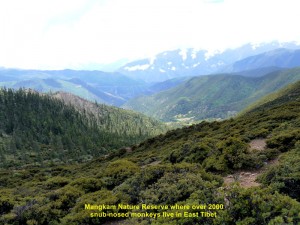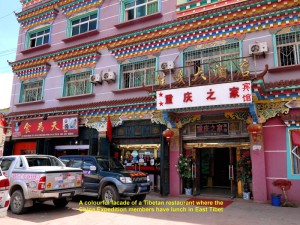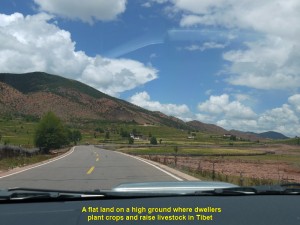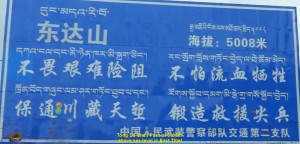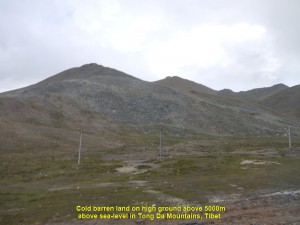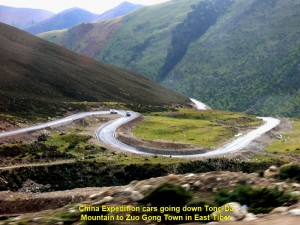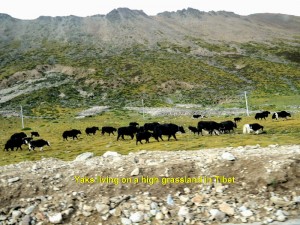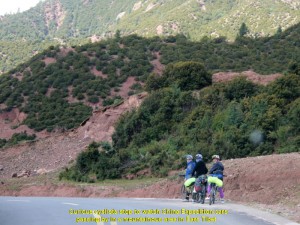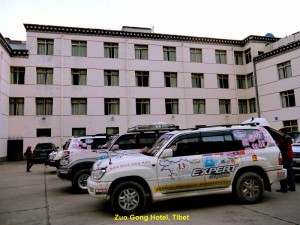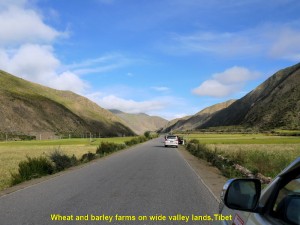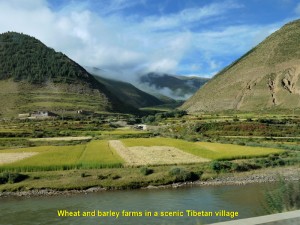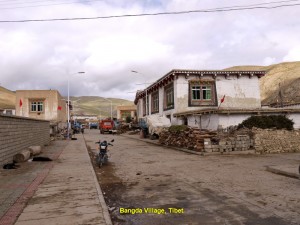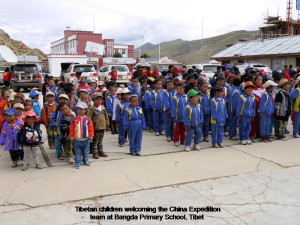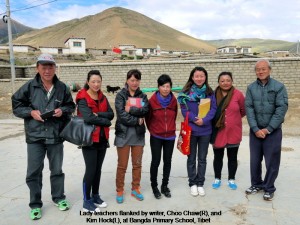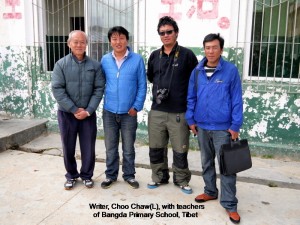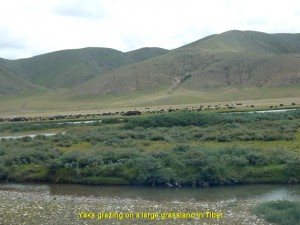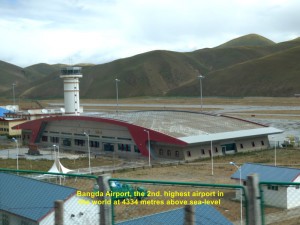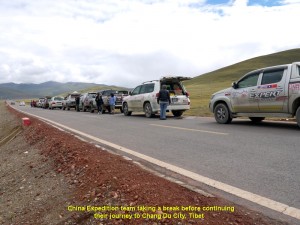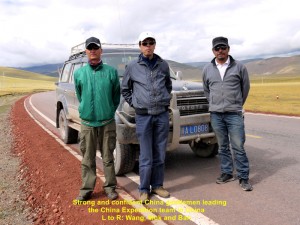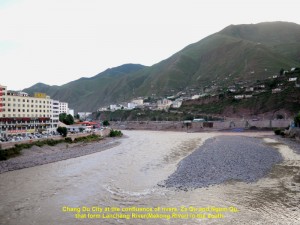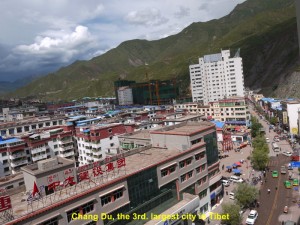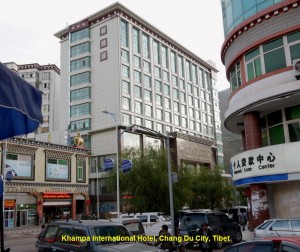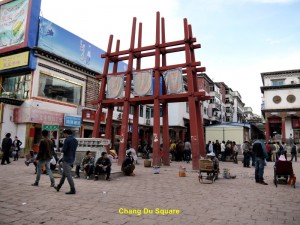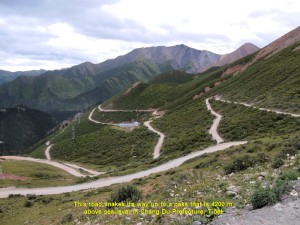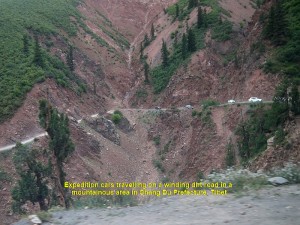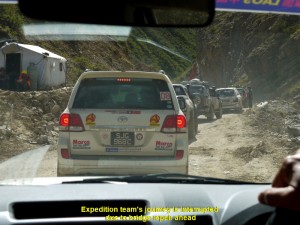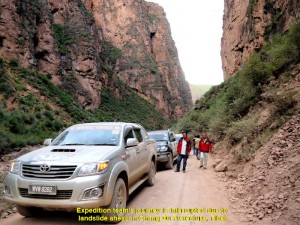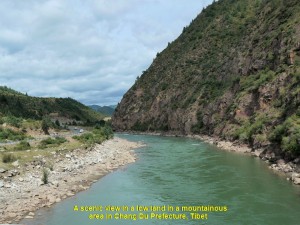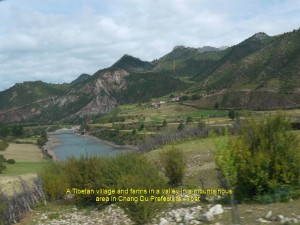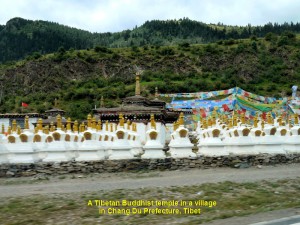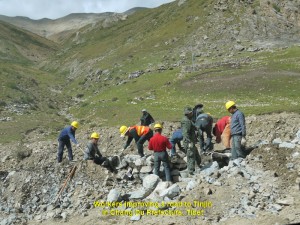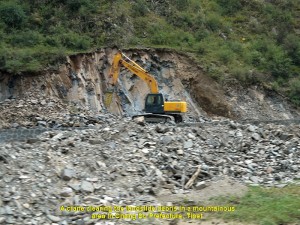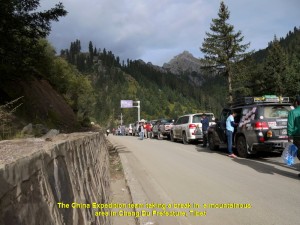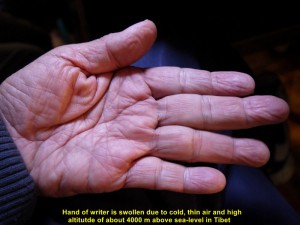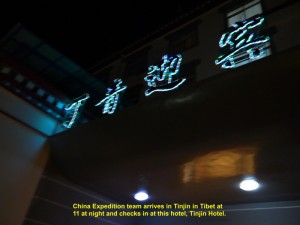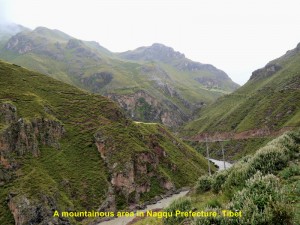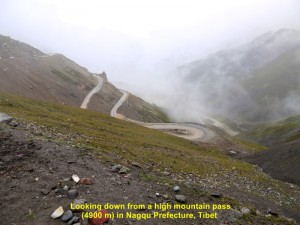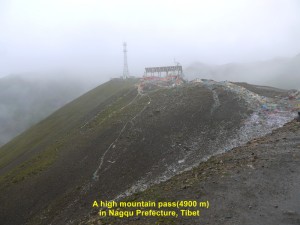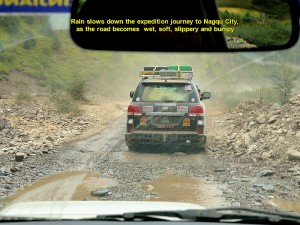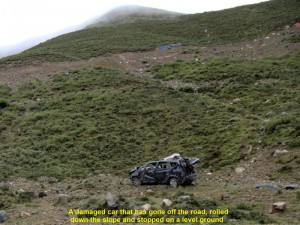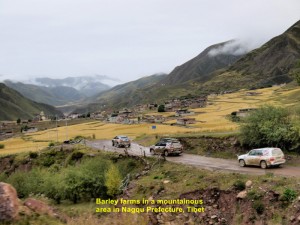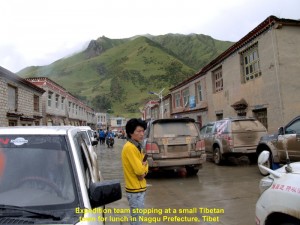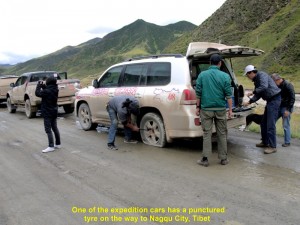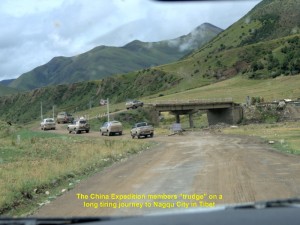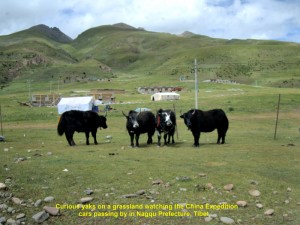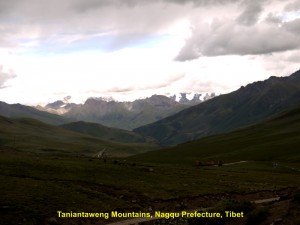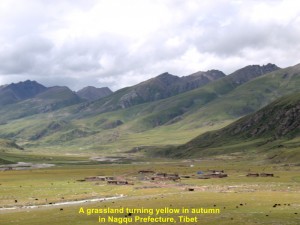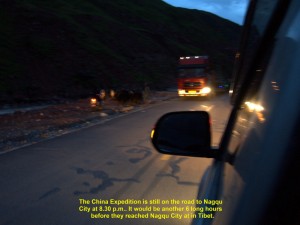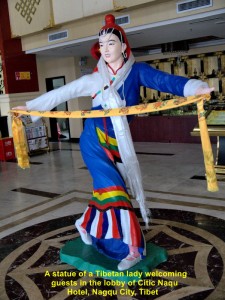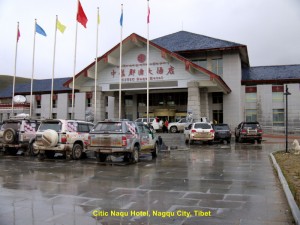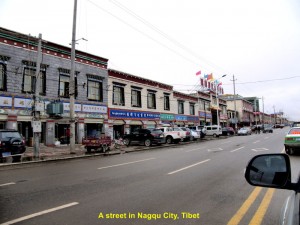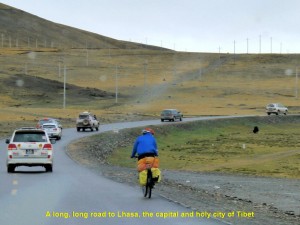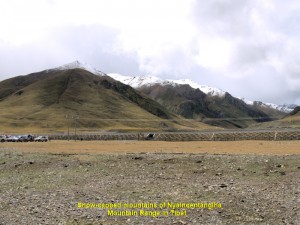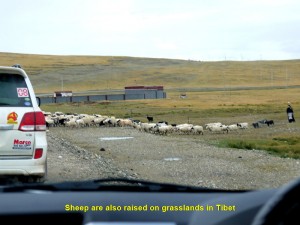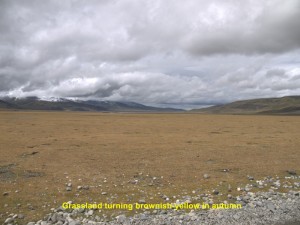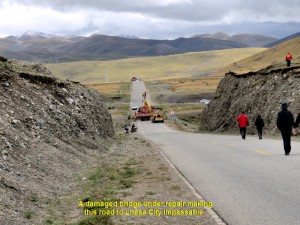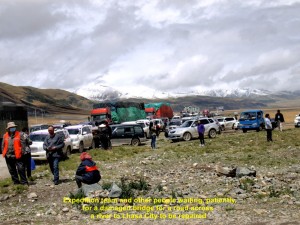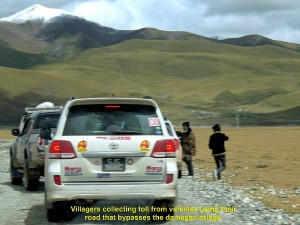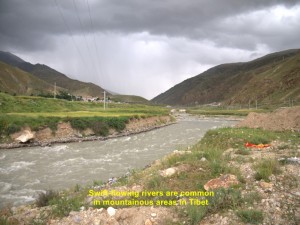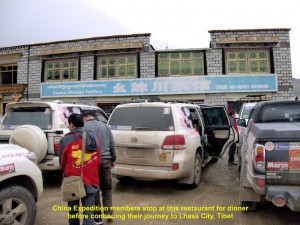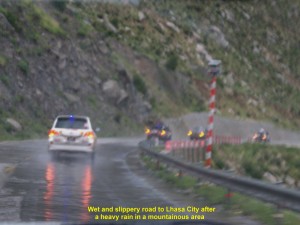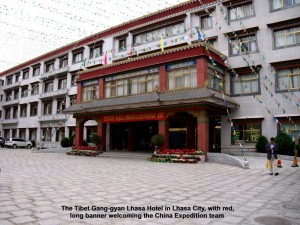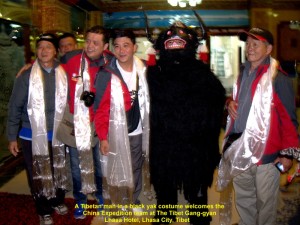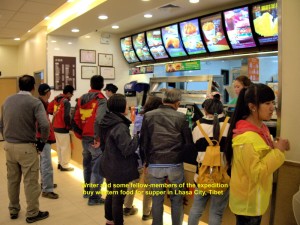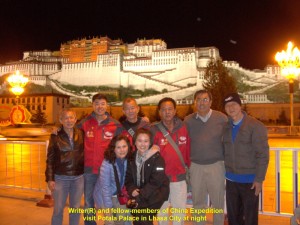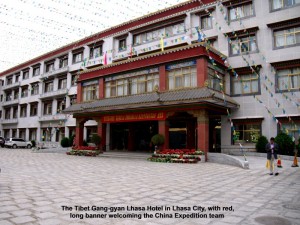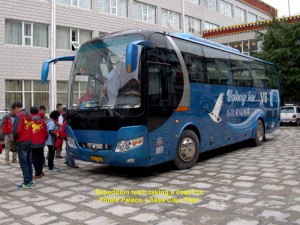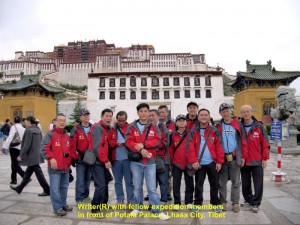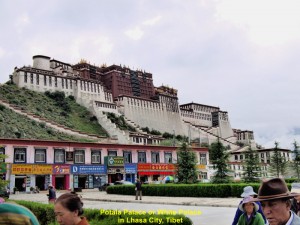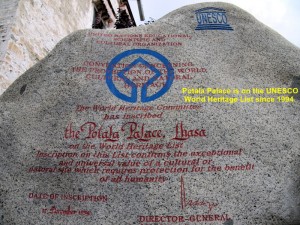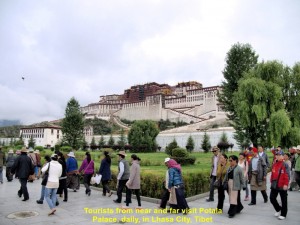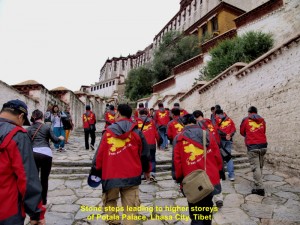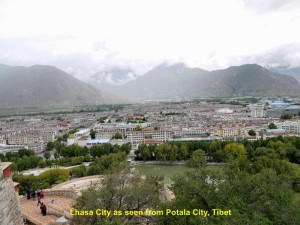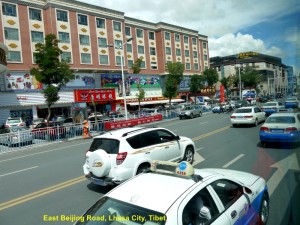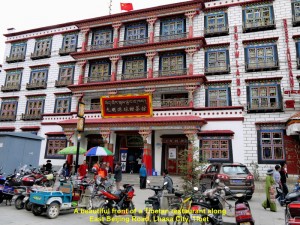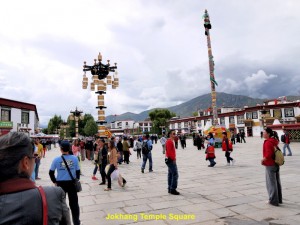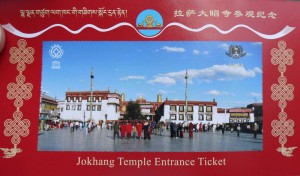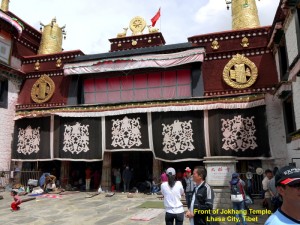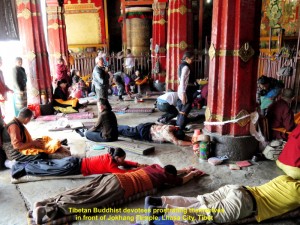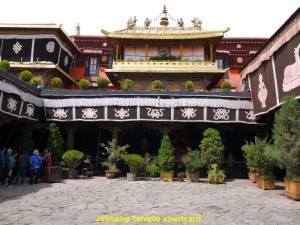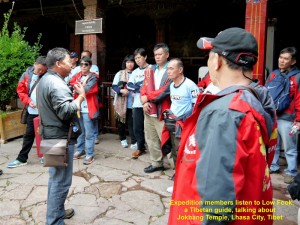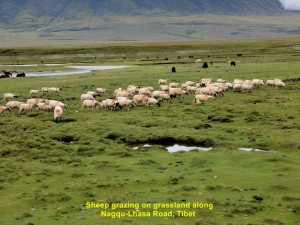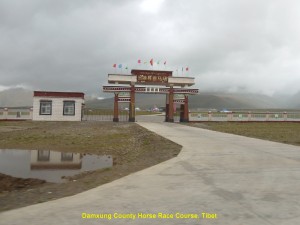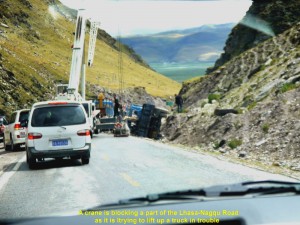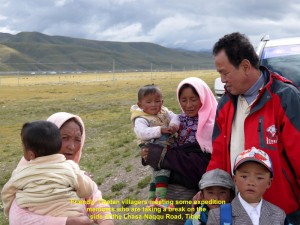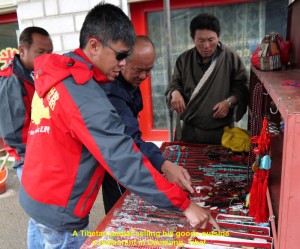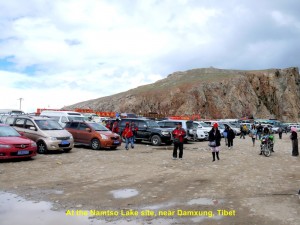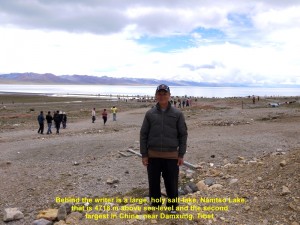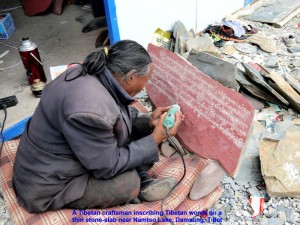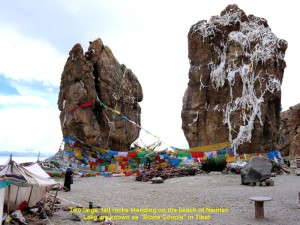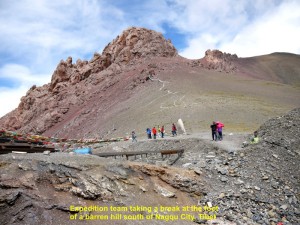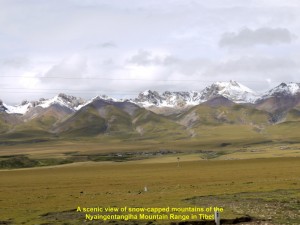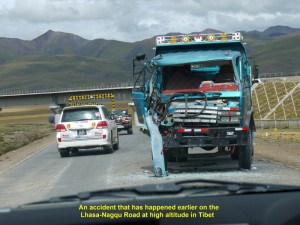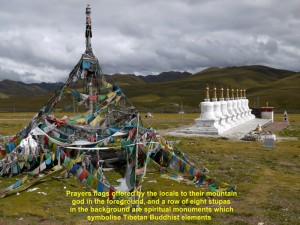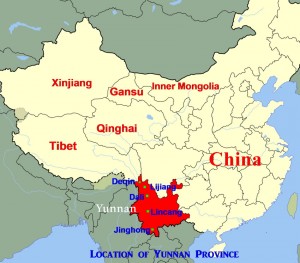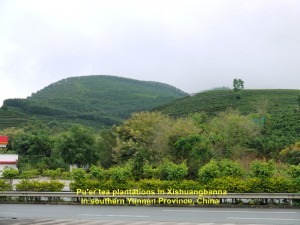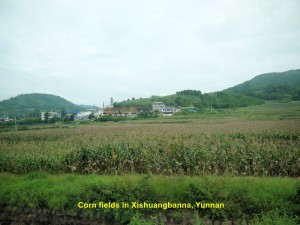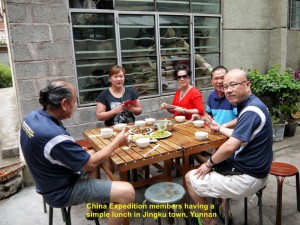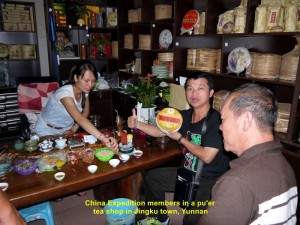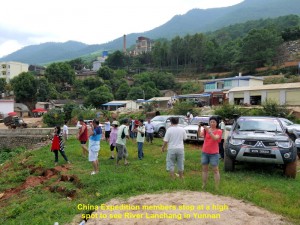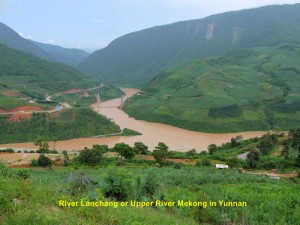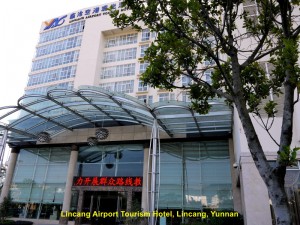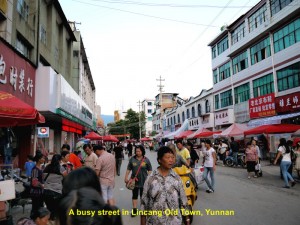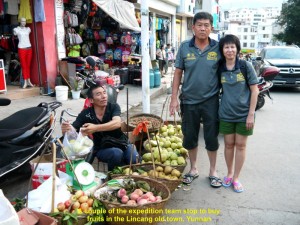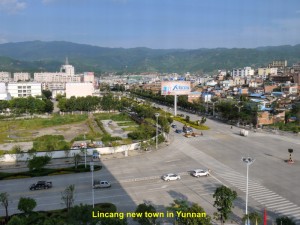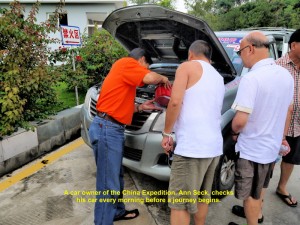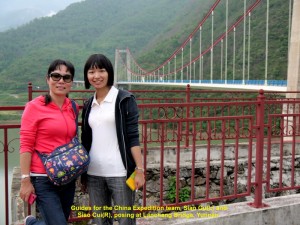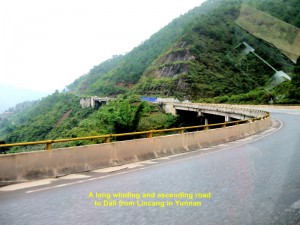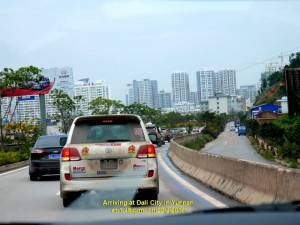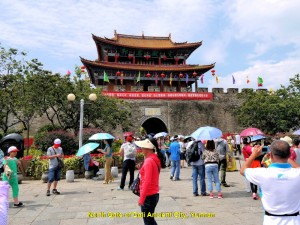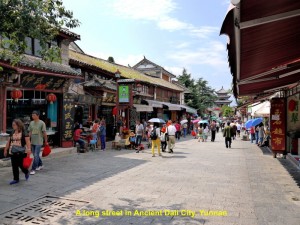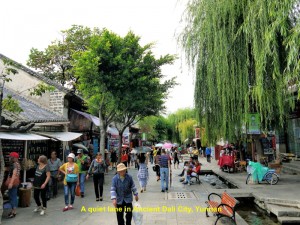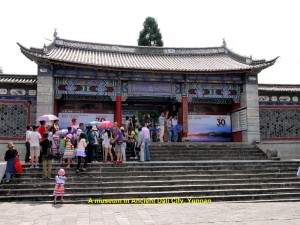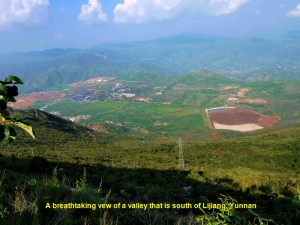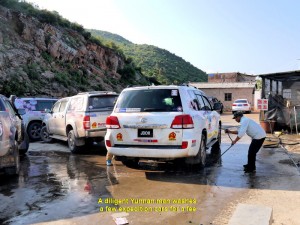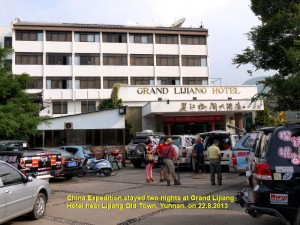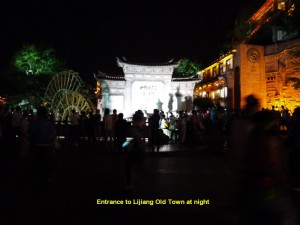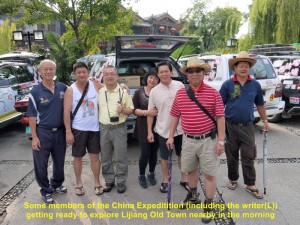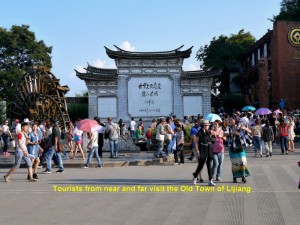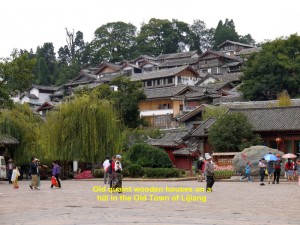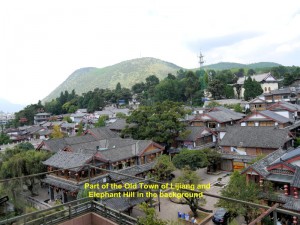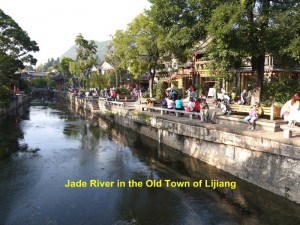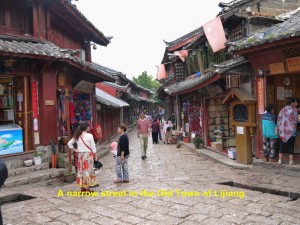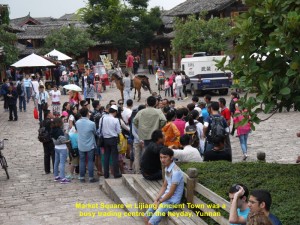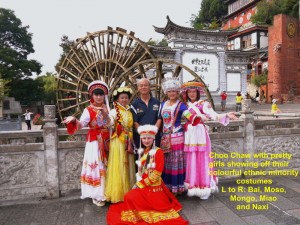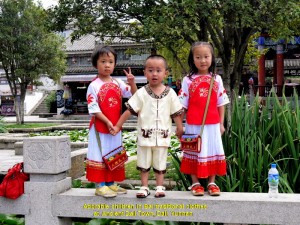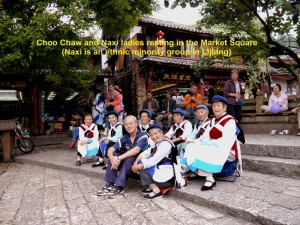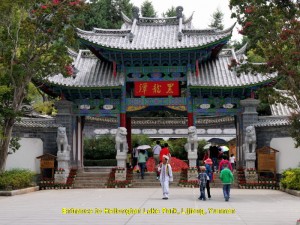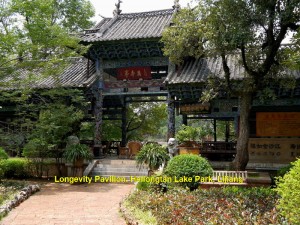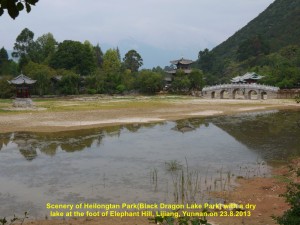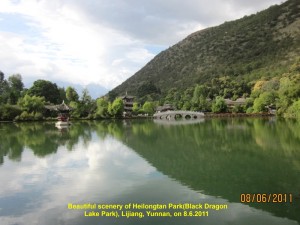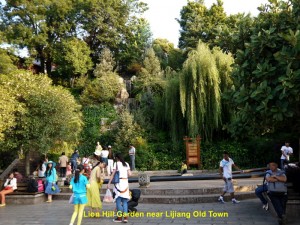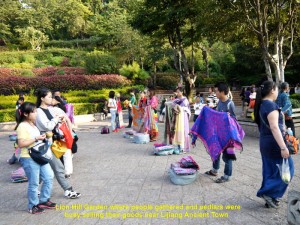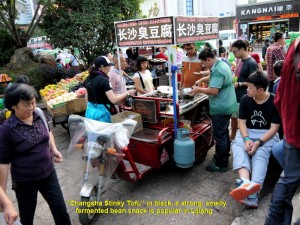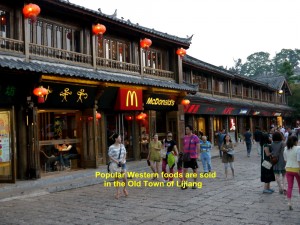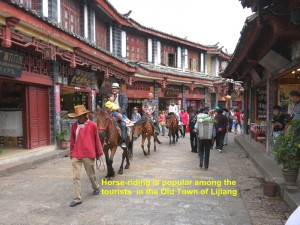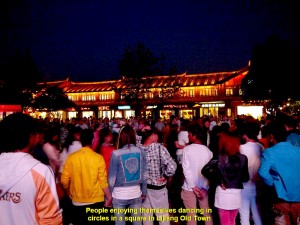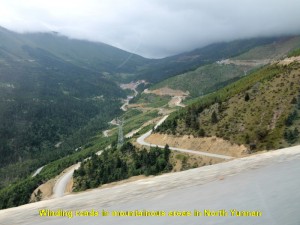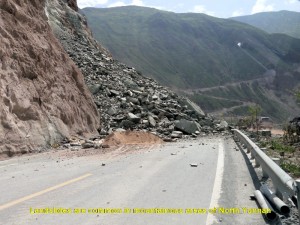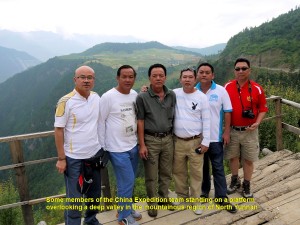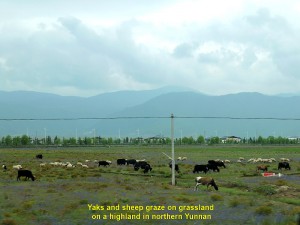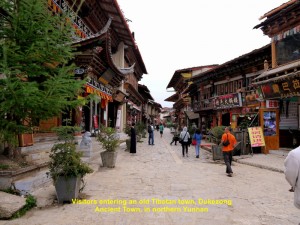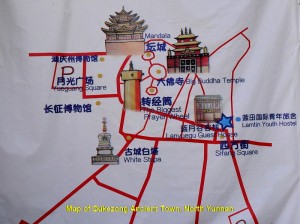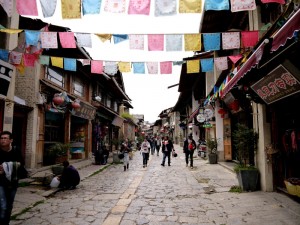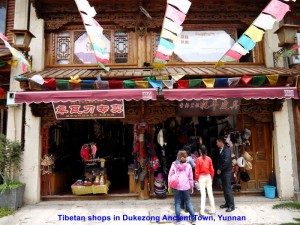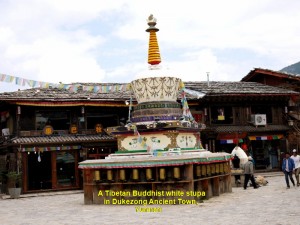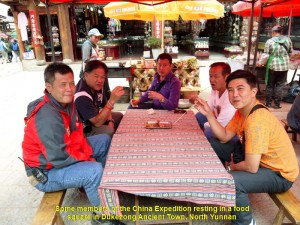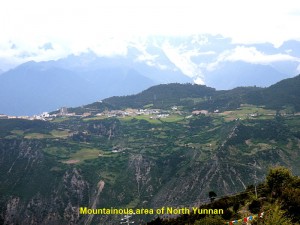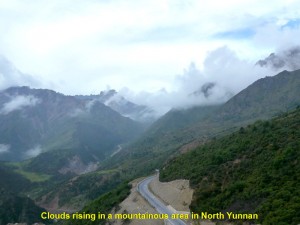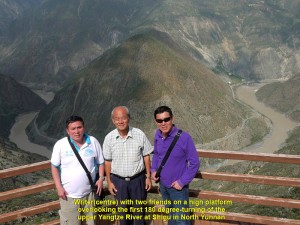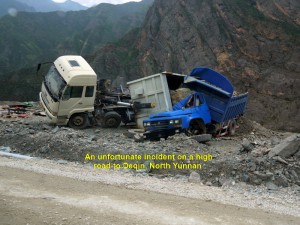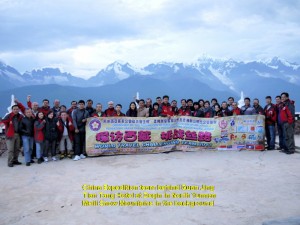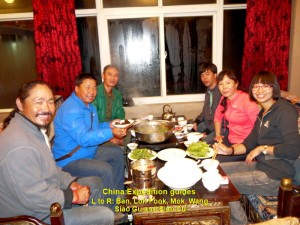Journal of My 2013 China Expedition Part IV (Qinghai)
Journal of My 2013 China Expedition Part IV (Qinghai)
Journey in Qinghai Province, China
(Day 18 – 19)
Day 18 (Sunday, 1.9.2013)
Nagqu – Golmud
(Distance: 860 km)
The first part of our journey, today, would be in the mountainous area of over 4500 m above sea-level in northern Nagqu Prefecture in Tibet and southern Qinghai Province on the northern Tibet Plateau.
First, we would go up Tanggula Mountain Range on the Qinghai-Tibet border from Nagqu City(4507 m) where we had stayed overnight, and then down all the way to Golmud City(2828 m) in central Qinghai Province, a long journey of 860 km that would take us more than half a day.
We would be travelling on the Qinghai-Tibet Highway that was running parallel to the Qinghai-Tibet Railway. The latter was built from Xining via Golmud in the north in Qinghai Province to Lhasa in the south in Tibet, a total distance of 1947 km.
At 6.40 a.m. we left Nagqu City, and headed north on the Qinghai-Tibet Highway. Most of the the road was good because it was tarred, wide, straight and level. While we were travelling in the mountainous area we did not see any dwellings and the flat vast lands were barren due to cold, high altitude and thin air.
At 9.30 a.m. we arrived at Amdo where we stopped at a gas-station for cars to be refilled. As we did not intend to make many stops on the journey then, we bought a few cups of instant noodle at the shop of the station.
Several minutes later, we were off again on the highway. Then two hours later, we reached the Tanggula Pass(5231 m above sea-level) which was on the Qinghai-Tibet border. It was the highest elevation we had reached so far. We stopped at the place for a while to see the surroundings where the ground was wet, barren and uninhabited, and snow-covered mountains of Tanggula could be seen nearby.
Erected on the pass was a large red stone monument of a soldier and civilian. It commemorated the soldiers and civilians who had built the Qinghai-Tibet telecommunication line in 1998 during Chairman Jiang Zemin’s administration. Besides, there was a small tea-house for passers-by. We met two curious Tibetan kids there. They were helping their parents at the tea-house.
Later, we were on the highway again going down Tanggula Mountain Range. After several minutes of travelling, we went off the highway to a spot nearby to see a hot spring. But we were disappointed when we saw the hot spring which was small and the surrounding was dirty and littered with garbage.
Then we went back to the highway, and at 1.20 p.m. we reached a small restaurant where we had a simple meal. After the meal, we were off again.
At 3.00 p.m. our journey was interrupted. Workers were busy repairing a damaged part of a highway, while many vehicles were waiting on both sides. As we still had a few more hundreds of km to travel, we could not wait for that part of the highway to be ready. So we went off the highway and travelled on the uneven land hoping that none of our cars would get stuck in the soft ground. Finally, we managed to get to the other side of the road after rocking, roughly, a few times in the cars.
Soon we crossed a long, low bridge that was over a wide river known as Tuo Tuo River. It flowed westwards and then southwards to join Yangtze River(6400 km long), China’s longest river.
As we were travelling on the highway, we could see blue sky and lots of clouds that looked like cotton-wool floating in the sky, slowly. On both sides of the road, we could see vast flat lands that stretch beyond the horizons. Besides, we saw snow-covered mountain range of Kunlun(over 7500 m above sea-level) far away in the west, and occasionally, trains running on the Qinghai-Tibet Railway. There was a moment when we saw several wild antelopes on the flat land that was sparsely covered with grass.
At 7.30 in the evening we reached a high part of the Kunlun Mountain which was 4767 m above sea-level. The place was bright, tranquil, but cold and wet, and we could see snow-covered mountains of Kunlun in the distance. Erected at the place was a large purple statue of a man, Jiesung Suonam Dajie, who was known as ” Environmental Protection Guard” of wildlife and the Qinghai Nature Reserve.
Having seen enough of the place for a short while, we went down the mountain and were travelling on the highway which was busy then. I estimated that it would be about two more hours before we reached our destination, Golmud City. While we were travelling on the level straight stretch of the highway, we could see the sun setting behind some hills in the distance at 8 p.m. and trucks with bright lights passing by.
It was very dark at 9 p.m. when we were quite near Golmud City. Then at a dusty bend on a hill, while we were going down, our car, suddenly, veered off the road, and the two right wheels followed by the two left wheels went in and out of a deep trench.
As our driver was trying to get the wheels out of the trench, the fellow-member sitting next to him and I on the back seat were rocking, violently, for a few minutes inside the car. When the car stopped, suddenly, I was thrown forward into a space in between the driver’s seat and the back one, and, luckily, I was unhurt. But our fellow-member had a slight cut on his forehead and his pair of spectacles was broken, when his head hit the rear mirror. Our driver was in shock and kept repeating himself “I thought the oncoming truck with bright lights was crossing into my path. So I steered the car to the side to avoid it.”
We were all stunned for a short moment before we came out of the car to check its damages. The tyre of the front left wheel was flat. Two of our China-guides who were following behind us earlier came to help to replace it with a spared one. We thanked our lucky stars as none of us suffered any serious injury, and the trench helped to stop our car from going over a cliff.
At 11.50 p.m. we were glad to arrive at a hotel, Salt Lake Hotel, in Golmud City in Qinghai Province, where we took our late dinner and stayed for a night.
Day 19 (Monday, 2.9.2013)
Golmud – Huatugou
(Distance: 458 km)
Today we were going to Huatugou which was 458 km north-west of Golmud city and near the Qinghai-Xinjiang border. The town was in an oil-rich region of Gobi Desert, and had many living quarters built, specially, for oil-workers from near and far in China.
After a good night rest without any bad dream of the previous night incident, I felt rejuvenated in the morning. At 12.40 p.m. we all left Salt Lake Hotel in Golmud City for another long journey to Huatugou.
Before our journey began, we went to a gas-station to get the cars refilled. As the gas-station were short of workers some of our members pumped oil into their own cars themselves. Soon our journey started.
As we were moving in the outskirt of the busy city, we saw red date farms on both sides of the road.
After about half an hour later, one of our expedition cars, accidentally, hit the back of another, and there was a slight delay of the journey. The damaged car had to go back to the city to get its radiator repaired. The rest of the cars then continued the journey and we hoped that the car when repaired would catch up with us later.
As we were travelling north and then eastwards we were crossing some changing landscapes from a vast flat arid plain with little vegetation to a sandy one devoid of plants, a part of the Gobi Desert.
When we were close to Huatugou we saw “donkeys” which were machines that continuously moving up and down, pumping out oil from the underground in Gobi Desert. But the Chinese called them “Head Bowing Machines” instead. Besides, we saw many large circular oil-storage tanks in the desert, showing that Gobi Desert was rich in oil.
As the journey was smooth we arrived at 7 in the evening at a hotel, Petroleum Hotel, in Huatugou, and stayed there for a night.
Journal of My 2013 China Expedition:
Written by Choo Chaw, Kluang, Johor, Malaysia
Journal of My 2013 China Expedition Part III (Tibet)
Journal of My 2013 China Expedition Part III (Tibet)
(15.8.2013 – 17.9.2013)
Part III
Tibet Journey(Day 11 – 17)
Day 11(25.8.2013, Sunday)
Deqin – Zuo Gong
(Distance: 385 km)
Today it would be a long and difficult journey again, a journey that we had to go to higher ground known as the “Roof of the World” or the Tibetan Plateau of over 4ooo m above sea-level.
Yesterday, we travelled from Lijiang to Deqin where we stayed for a night at Jing Tian Tang Hotel on a high mountain in north-east Yunnan.
Today, we woke up early. At 7 a.m. while the sun was rising, we went outside the hotel and were awe-stricken by the breathtaking scene of Meili Snow Mountains in the south-west. The mountains were golden in colour for several minutes. But when the sunlight disappeared, they turned blue. We, patiently, waited for a while for the change to happen. Owing to many clouds in the sky, the mountains still remained blue.
At 8 a.m. we left the hotel and moved down a winding road and then up again. Occasionally, we passed through villages, travelled on roads parallel to rivers, crossed bridges and went through a few tunnels. We stopped at one or two gas-stations for the cars to be refilled.
After travelling for three hours in the morning, we crossed a Tibetan border and stopped at a checkpoint where some soldiers checked some of our cars. Then we moved on again to Zuo Gong Town. Several minutes later, in Markam County, Tibet, we saw a Catholic church on a hill in the distance. It was white-washed with two prominent crosses. According to our China guide, it was built by a French missionary, Felix Biet(1838-1901) in 1865 in a Yanjing village or “Yerkalo” village. It was the only Catholic church in the Buddhist country of Tibet. About half of the villagers had become Catholic(500).
We did not stop to look at the church until we came to a place where we could see from a high ground a river in another village in a valley of Yanjing. That river had red salt on its banks. In the olden days, that salt was an important commodity which attracted traders from near and far creating a salt route in Markam(Mang Kang) County.
Then we continued our journey . Later, we stopped at another place where we saw a forest reserve, Mang Kang Nature Reserve, from a vantage-point. In that forest, over 2000 snub-nosed monkeys lived.
At 12.30 p.m. we left the nature reserve and travelled for an hour and a half before we arrived at a Tibetan restaurant with colourful facade in a town. After our lunch in that restaurant we moved on again. This time we had to go up a mountain pass at 5008 metres above sea-level, Tong Da Shan Pass, and then down the mountain to a town known as Zuo Gong.
When we reached the high pass at 6 p.m. we alighted our cars and looked at the scenes around us. We saw high mountains in the distance, and barren but permafrost-land around us. The air around us was windy and chilly.
A few minutes later, we made our way down a winding road. On the way we saw cyclists and hitch-hikers travelling west to Lhasa, and passed villages, farms and grasslands where yaks grazed.
Soon we reached Zuo Gong in the evening, had dinner and stayed at Zuo Gong Hotel for a night.
Day 12 (26.8.2013, Monday)
Zuo Gong – Chang Du
(Distance: 252 km)
Today, we would be taking Route 317 to Lhasa via Tinjin in the north, instead of a shorter one, Route 318 via Pome in the west of Zuo Gong. It was because of a bridge that had collapsed near Pome making the road impassable, and our journey to Lhasa would be over 200 km longer.
At 8 a.m. we left Zuo Gong and headed north for Chang Du first. On the way, we came across Tibetan villages, wheat and barley farms and grasslands where the yaks grazed.
After two hours of travelling, we stopped at a small village, Bangda, and visited a small school. We were warmly welcomed by over 100 children and a few staff. We spent some time interacting with them. Before we left, we gave away some presents to them.
On the way to Chang Du, we came across more villages and farms. There were large grasslands where thousands of yaks were raised by Tibetan nomads. Several kilometres north of Bangda, we saw the 2nd. highest airport in the world, Bangda Airport, at 4334 m above sea-level.
Occasionally, we stopped by a roadside for a short break answering a call of nature and, at the same time, enjoying breathing in fresh air and sights of picturesque natural landscapes.
Having travelled for several hours, we, finally, arrived at Chang Du City at 2.30 p.m. where we checked in at a hotel, Khampa International Hotel.
Chang Du City, the 3rd. largest city in Tibet, is located at the confluence of two rivers, Za Qu and Ngom Qu. These rivers flow south and later join up with Lanchang River(Upper Mekong River). After checking in at the hotel, we went out and walked along some streets for sightseeing. Then at 6.30 p.m. we had dinner together at a restaurant near the hotel.
We stayed at the hotel for a night before we left in the morning for Tinjin in the west.
Day 13 (27.8.2013, Tuesday)
Chang Du – Tinjin
(Distance: 248 km)
At 8 a.m. we left Chang Du and went west to Tinjin. The road to Tinjin was rough and problematic.
Most of it was winding and not tarred. Where the place was dry, it was dusty, and where the place was wet, it was slippery, soft and dirty. Besides, pot-holes, constant repairs and improvements of many parts of the road delayed our journey, considerably.
The worst problem was the landslide that covered a few short stretches of the road forcing vehicles to take temporary rough roads that bypassed them, or wait until the road was cleared of landslide-debris. Owing to all those and other unfavourable factors, our journey was not smooth, and we took a much longer time to reach Tinjin at 11.00 p.m.(a journey of 15 hours!)
Although the journey was tough, we enjoyed the beautiful natural sceneries and picturesque villages.
Besides, we saw Buddhist Tibetan temples, grasslands and farmlands. We were thankful to the workers we came across on the journey for repairing, improving or clearing roads of landslide-debris.
When we arrived at Tinjin at 11 p.m., we felt, completely, exhausted. Some of us felt dizzy and nauseous due to cold, thin air and high altitude of over 4000 metres above sea-level. This sickness is known as “acute mountain sickness”. To avoid this uncomfortable condition, we were advised to take a medicine we had brought along.
At night we stayed at a hotel, Tinjin Hotel, in the city.
Day 14 (28.8.2013, Wednesday)
Tinjin – Nagqu
(Distance: 380 km)
Today, it would be a much longer and worse journey than yesterday’s. Most of it was in the mountainous areas of over 3500 m above sea-level in Nagqu Prefecture.
A few high passes of over 4000 m above sea-level had to be crossed before we could get to Nagqu City from Tinjin. Rain often occurred in these areas making dirt roads wet, soft, bumpy and slippery, and slowing down our journey. In spite of all those unfavourable conditions, the sights of the mountainous areas would be spectacular.
As the journey for today was going to be long, we started at 7 in the morning. We travelled along winding roads in the mountains and roads running parallel to rivers in the valleys. We went up a mountain to reach a high mountain-pass of 4200 m above sea-level, and later a higher one of about 4900 m above sea-level.
At a place, while going up a mountain, we saw a damaged car on a slope. It might have gone off a road and rolled down the slope for about 300 m before it stopped and stood on its four wheels.
In the lowlands, we passed through villages, barley-farmlands and grasslands. At 11.30 p.m. we stopped for lunch at a small town, and another for dinner at 7.30 p.m.. We also stopped a few times on the roadsides for a short break to answer a nature call and stretch our stiff legs. Sometimes, when we stopped for a break, we met and conversed with friendly strangers.
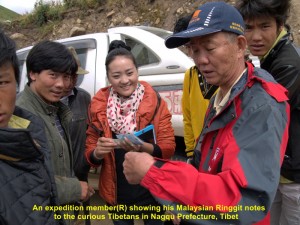
Curious Tibetans learning about Malaysian currency from an expedition member(R) in Nagqu Prefecture, Tibet
Some of our expedition cars did have some trouble, but, fortunately, they were minor ones. On one occasion, one of them had a punctured tyre and was then replaced, immediately, by three of our helpful China guides. On another occasion, another car, accidentally, brushed against a local car on a soft dirt road in a countryside, and the owner of the latter asked for an unreasonable sum for the minor damage. There was one car belonging to one of our team-members that had an alternator problem in Tinjin. It had to be ordered and sent from Malaysia to Lhasa where it was later fixed in the car in Lhasa.
Our journey on high and low lands to Nagqu continued. For the first time in our journey, we saw yaks at close range at 3.30 p.m., and snow-capped mountains of Taniantaweng Mountains at 4,30 p.m. in Nagqu Prefecture in Tibet.
The journey from Tinjin to Nagqu City was a treacherous and unforgettable one. It took us too long to reach Nagqu City causing some of us sick. Anyway, we arrived, safely, at the city at 2.30 in the morning, after travelling a total of 19.5 hours! We checked in at Citic Naqu Hotel, immediately. The moment I entered a hotel room, I went straight for the bed, dropped onto it and slept until late morning.
Day 15 (29.8.2013. Thursday)
Nagqu – Lhasa
(Distance: 383 km)
This morning we woke up very late, as we arrived late at the hotel. At 10.15 a.m. we left for Lhasa, the capital of Tibet, that is south of Nagqu City.
On the way, we saw trains running on the north-south railway a few times. That railway from Golmud to Lhasa(1142 km long) is known as Qinghai-Tibet Railway, the highest railway in the world. About 85% of it is above 4000 km above sea-level, and the highest point it reaches is 5072 m above sea-level. This engineering feat is one of China’s great achievements in this century.
It crosses three mountain ranges, many rivers and lakes, giving its passengers a chance to see many spectacular diverse natural landscape during their whole journey. Its carriages have special enriched oxygen and ultra-violet(UV) protection systems. The trains on this line travels at a speed of about 100 km/h.
The road to Lhasa was good as it was tarred and most of it was straight and level. After two hours of travelling from Nagqu, we saw snow-capped mountains in the distance on our right. These mountains are known as Nyainqentangiha Mountains. Occasionally, rain fell making the road wet and slippery, and water in rivers flowing, rapidly. While travelling, we passed through valleys, villages and grasslands where yaks and sheep grazed.
At 12.40 p.m. we reached a place where a long line of vehicles stopped on the road. Later, we learned that a bridge further down the road was damaged and under repair. Our China chief guide went to see the head of a village nearby asking for his permission to use his village road that bypassed the bridge, but he refused despite the willingness to pay him some money.
After two and a half hours had passed, the bridge was not ready yet. So our chief China guide appealed to the village-head to allow us to use his road. He relented, but we had to pay him a toll of RMB50 for each car for the maintenance of his road. We, gladly, paid him and were on our way again. Soon we were ascending a road in a mountainous area and reached a high mountain pass of 4200 m above sea-level at 4 p.m..
At 5.10 p.m. we arrived at Damxung where we stopped at a small restaurant for dinner. After the quick dinner, we moved on again, travelling parallel to a river and the railway. Then we were on a winding and ascending road again in another mountainous area where it was raining heavily.
Finally, at 8.30 p.m. we arrived at Lhasa City, the capital of Tibet. We went straight to a hotel where we were warmly welcomed by the hotel staff and two men in a black yak costume performed a welcome-dance. Then we were each given a long white silk scarf as a gesture of goodwill.
After checking in at the hotel, a few fellow-members and I walked along a main street, East Beijing Road, and stopped at a restaurant where we had western food for supper. Later, we walked to a world famous building, Potala Palace. As it was closed at night we looked at it from a distance. Built on a small hill, it was large and brightly-lit. Later, we took trishaws back to the hotel.
Day 16 (30.8.2013, Friday)
Lhasa Citiy Tour
Today, it would be a relaxing day. We were going to visit two famous tourists’ places of attraction, Potala Palace and Jokhang Temple in Lhasa City.
At 9 in the morning, a bus brought us to Potala Palace. It is a large, unique, majestic-looking building. Built on a mountain(Marpo RI), it has 13 storeys that house statues of Buddha and past Dalai Lamas, shrines, religious murals, scriptures, libraries, etc. At the top storey of the building is the Dalai Lama’s office. (The present 14th. Dalai Lama is in exile in India since the 1959 Tibetan uprising.)
It was built by a king for his two wives in 1645. Later, it became an important Tibetan political and religious centre. Now it is a famous Tibetan Buddhist museum. In 1994, it was designated by UNESCO as a “World Heritage Site”. It attracts over 2 000 Buddhist pilgrims and tourists, daily.
At 10.30 a.m., we entered the palace. We walked up narrow wooden steps to a few storeys to learn about the Tibetan Buddhism and present and past Dalai Lamas. A panoramic view of the city could be seen from Potala Palace.
At 12 noon we came out of the palace. Before we left, we had a last look of the building and were quite impressed by its unique architecture, and understood its importance to the Tibetans.
As we travelled along a main road of the city, East Beijing Road, we noticed that there were no multi-storey buildings. Most of the buildings were a few storeys high, and their fronts were painted with Tibetan designs. Taxis and trishaws were many along the street.
Later, at 2.30 p.m., we went together to visit a well-known Tibetan Buddhist temple which is known as Jokhang Temple, another UNESCO World Heritage Site.
Jokhang Temple is in the centre of old Lhasa city. To the Tibetans, it is the most sacred temple in their country. Many Buddhists from near and far make a pilgrimage to this temple, daily.
According to the Tibetan history, a Tibetan king, Songsten Gampo, built it as a residence for his two foreign wives, a Chinese and Nepalese, in 647 A.D.. Both of his wives brought along with them Buddha statues from their own countries and placed them there. Later, kings of other dynasties made it larger and an important religious place of worship for Tibetans. Now, it has many small rooms that house Buddha statues of different sizes.
In the evening, we had dinner at a restaurant in the downtown. After dinner we went back to our hotel and retired early.
Day 17 (31.8.2013, Saturday)
Lhasa – Nagqu
(Distance: 383 km)
Today, we were all ready for a long jouney. We would be going north from Lhasa and back to Nagqu City, a total distance of 383 km.
At 8 in the morning we started the journey to Nagqu. It was raining slightly and cold as we were heading north. On the way we saw vast grasslands where herds of yaks and sheep were grazing, Qinghai-Tibet Railway crossing the grasslands, and Damxung Horse Race Course where horse races and horsemanship competitions were held during horse festivals.
While travelling on the road we saw some unfortunate trucks in trouble: two went off the road and one of them was being pulled out of a trench by a crane.
At 12 noon we arrived at Damxung and had a simple meal at a restaurant in the outskirt. Then we were on the road again. At 1.30 p.m. we came to Tibet’s largest lake, Namtso Lake or Sky Lake, a salt-lake that is 4718 m above sea-level. The Tibetans consider it a sacred place. When they pray there they ask for blessings from their gods.
On the shore there were many people from near and far enjoying the scenic view of the lake. On the dry ground, there were some shops, including food and beverage shops. There were two towering rocks standing close to each other a few hundred metres away from the shops. Those two rocks were given a name, “Stone Couple”.
At 2.30 p.m. we left Namtso Lake and continued our journey to Nagqu City. Soon we went up a mountain pass which was over 4000 m above sea-level. The mountain we saw was barren.
While we were going down the mountain we saw snow-capped mountains of the Nyaingentangiha Mountain Range in the distance on our left, vast grassland and the Qinghai-Tibet Railway again.
Before we reached a village, we saw a damaged truck on the road that had an accident earlier. On arrival at a village for a break, we saw worship coloured flags and a row of eight whitewashed stupas. According to the Tibetans, the flags are put up in mountainous areas for asking their gods for good blessings, and the stupas are built as sacred structures that symbolise peace, harmony and enlightenment.
At 7 p.m. we, finally, arrived at Nagqu City. We had dinner first before we checked in at a hotel, Na Qu Hotel. When I went into my room I switched on a television and listened to news. I was shocked when a news-presenter said that an earthquake of 5.9 magnitude happened at about 8.30 in the morning in Deqin and Shanggrila counties in Yunnan. It killed about 5 people, injured 49 and closed some roads due to landslides. We were in Deqin 6 days ago!
Journal of My 2013 China Expedition:
Written by Choo Chaw, Kluang, Johor, Malaysia
Journal of My 2013 China Expedition Part II (Yunnan)
Journal of My 2013 China Expedition Part II (Yunnan)
(15.8.2013 – 17.8.2013)
Yunnan Journey(Day 7 – 10)
Day 7 (21.8.2013 Thursday)
Jinghong – Lincang
(Distance: 418 km)
Our China Expedition team had already travelled 6 days, safely, from Malaysia via Thailand and Laos to the present city, Jinghong, in Yunnan, China, and we still had a long journey ahead of us.
Today, at 8.10 in the morning, we left Jinghong for a long journey to Lincang. The road was winding and passing through several tunnels in the mountainous areas. Occassionally, landslides blocked parts of the roads. As we were travelling we came across plantations of pu’er tea and some farms of dragon fruits, corns, lotus plants and tobacco.
At 12.45 p.m. we arrived at a town, Jingku, where we had lunch and bought some pu’er tea(a popular fermented tea). An hour later, we moved on again.
At 4 p.m. we stopped for awhile on a high ground to see a picturesque view of a yellow river, Lanchang River or Upper Mekong River, and its surroundings. Half an hour later, we were off again.
At 5.10 p.m. we reached Lincang City, thanks to the good tarred road. After checking in at a hotel, Lincang Airport Tourism Hotel, and having our dinner, we walked to the Lincang old town nearby to have a look, as the day was still bright.
That old town had many streets and shops. There were many activities going on in the evening, especially along the streets where peldlars were selling their goods, such as clothes, fruits, snacks, footwear and kitchenware, to name a few, and the local people were looking for good bargains.
Later, we returned to the hotel and retired in our comfortable beds.
Day 8 (22.8.2013 Friday) Lincang – Dali – Ljiang
(Distance: 468 km)
At 8 a.m. we had a 10 minute-exercise in the hotel compound to stay healthy all the time, as our expedition was long and arduous. After all the owners of the China Expedition had checked their cars, we left Lincang for another long journey to Lijiang.
After two hours of travelling, we crossed a long, high suspension-bridge, Lanchang Bridge, that is over Lanchang River or Upper Mekong River. We stopped at the bridge to see the natural landscape of the place. Then we continued our journey. We were travelling on a long winding road that brings us to higher ground which was over 2000m.
Soon we reached a city, Dali. It has an ancient town near a lake, Erhai Lake. This ancient town is known as Dali Ancient City, and was built in 764 A.D.. It was a political, economic and cultural centre for a few dynasties in its heyday.
In 1998, with the help of local traders and authority, the ancient town was restored to its past glory. Surrounded by a rectangular wall with two gates, North Gate and South Gate, the town attracts lots of tourists from near and far.
We spent a short time at the ancient city, strolling, leisurely, along its main street, browsing at a few shops, visiting a museum and watching some visitors.
At 4.30 p.m. we left Dali City. On our way to Lijiang, we stopped at a high place to see a panoramic view of a wide valley below. Then we had a snack at a hawker-stall there. As we were eating a hardworking local man washed a few dirty expedition cars for a fee.
Then we were on the road again. At 7.50 p.m. we arrived at an ancient town of Lijiang, Lijiang Old Town, and checked in at Grand Lijiang Hotel nearby. After dinner, we walked to the old town nearby to watch people dancing in circles to the accompaniment of loud Chinese musics.
Day 9 (23.8.2013, Saturday) Lijiang
Today, we were free to go anywhere we wanted. Most of us walked to Lijiang Old Town to see what it was like nearby. That was my second visit.
This small ancient town is the remaining part of the ancient city. It is over 800 years old and was an important trading centre on the Ancient Horse-Tea Route where traders from India, Tibet and south-western China met and exchanged goods.
A river, Jade River, flows from the north to this town and then branches into three streams that run through it. In the beginning, houses were built along these streams. Later, houses were built close to each other in a haphazard manner along narrow streets.
It is a beautiful ancient town of hundreds of quaint wooden buildings of Naxi ethnic minority’s architecture. In 1997, it was declared as a UNESCO World Cultural Heritage site.
I spent a few hours strolling in the town and kept my camera busy. It was quite a popular place, as there were many tourists visiting this well-preserved and clean ancient town.
At 12 noon, I walked alone the old town to another place which is also a tourist attraction. Known as Heilongtan Park(Black Dragon Lake Park), it is not far from Lijiang Old Town. When I arrived at the park, I entered and saw a beautiful garden and some ancient buildings built during the Qing and Ming Dynasties.
As I walked further in, I was totally shocked to see a lake without water. I visited that place two years ago and was fascinated by its beautiful scenery when the lake was full of clear water. The scenery in the photo below was what I saw then and the scenery in the photo below it was what I saw two years earlier. “What a great difference with and without water in the lake in Heilongtan Park in Lijiang!” I told myself.
I walked back to Lijiang Old Town feeling disappointed about the scenery of the park. Before entering the old town, I was attracted by a hill, Lion Hill, which was beautifully covered with thick foliage and a garden where people gathered and pedlars were persuading passers-by to buy their goods.
When I walked over to the place, I smelt a familiar stinking fermented bean snack, “chou doufu”. I followed the odour and saw a man busy selling the stuff which was black. I watched him for a while. As the smell was too unpleasant for me, I did not crave for it. I walked away and went back to the ancient town to have a western fast food as my dinner for a change that evening.
After that delicious meal, I stayed for awhile in the town watching visitors passing by and people dancing in circles.
Day 10 (24.8.2013, Saturday) Lijiang – Deqin (Distance: 359km)
Today, we were going to leave for a place, Degin(3550m above sea-level), in the mountainous area of northern Yunnan. We would have to encounter colder climate, low atmospheric pressure and acute mountain sickness, as the area was over 3000m above sea-level. Besides, the roads were winding and certain parts of them were covered with landslides.
At 8 a.m. we started our journey from Lijiang and headed north. An hour later, we stopped at a high spot which was a vantage point for seeing a spectacular view of valleys, mountains, forests and a river, Jingsha River(Golden Sand River), the upper Mekong River.
After an hour or so of enjoying the sight of the natural landscape, we moved on again. As we travelled, we moved further north and to higher altitude, and the weather became colder. On the way, we saw Tibetan dwellings, and yaks and sheep grazing on high grasslands.
At 12.30 p.m. we reached an ancient Tibetan town, Dukezong Ancient Town. Located in Shangri-la County in Yunnan, it was over 1300 years old. It was once an important trading post on the Ancient Southern Silk Route or Tea-Horse Trade Route.
It had a few narrow streets lined with wooden shop-houses built in Tibetan architectural style. Tourists liked to visit this old town to see the old but beautiful quaint Tibetan buildings. Most of them were shops selling all kinds of Tibetan products ranging from accessories, clothing and leather shoes to silverware, gemstones, jewellery and swords. Besides, there were some restaurants which served Tibetan food.
(A few months after our visit to this ancient town, a big fire destroyed two thirds of it.) Owing to time constraint, we spent an hour at the ancient town and left at 2.30 p.m.. The journey to Deqin was tough as the road had numerous sharp bends and some stretches were covered with landslides. Besides, it went up higher to a height of over 4000m above sea-level and then down to Deqin at the height of 3550m above sea-level. But the scenes in the mountainous areas were breathtaking.
An hour after we left Deqin, we stopped at a popular vantage point from where we could see the first 180 degree-turning of the upper Yangtze River(Jinsha River).
After travelling the whole day, we finally reached Deqin at 7 p.m. and checked in at a hotel on a high ground facing an awesome sight of Meili Snow Mountains in the distance, and overlooking the city in the valley below. The hotel was known as Jing Tian Tang Hotel. Then we had dinner together at the hotel before we retired in our rooms.
Meili Snow Mountains(Meili Xue Shan) located south-east of Deqin in north-western Yunnan have over 20 peaks and 6 of them are over 6000m ab0ve sea-level. The highest peak is Kawakarpo(6740m). The sight of the mountains with snow on their peaks and glaciers on their slopes is always spectacular. To the Tibetan Buddhists, the mountains are a sacred place to them.
Journal of My 2013 China Expedition:
Written by Choo Chaw, Kluang, Johor, Malaysia

